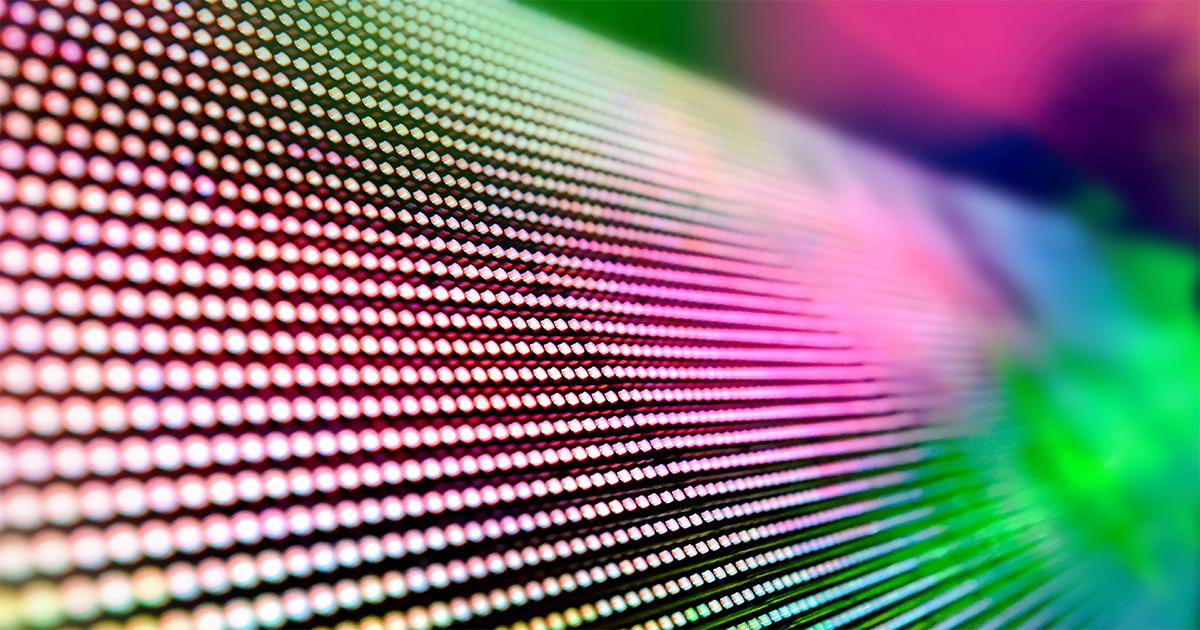
TL;DR
- Film and TV productions are increasingly using LED walls for virtual production, leading to an industry-wide demand for understanding the best LED panels available.
- Two industry experts, color scientist Tucker Downs and virtual production display specialist Ritchie Argue, undertook an eight-month project to rate and analyze 12 panels from eight manufacturers. They assessed each panel’s ability to display test materials in terms of contrast and color rendition throughout their entire brightness scale.
- Downs and Argue didn’t reveal the make or models of the units they tested, but they did provide a detailed explanation of their methods and testing points. They emphasized that their examination provides a far more accurate prediction of a panel’s effectiveness on a real set than any single numerical value.
- The panel evaluation process was specifically designed for on-camera use. Panels that look good to the naked eye may not perform well on camera, so the experts aimed to determine whether a display performs linearly and whether the colors are going to match from one shot to the next.
As film and TV productions expand their use of LED walls for virtual production, more industry pros naturally are seeking out the “best” LED panels available. Mega-budget productions will undoubtedly obtain the best there is, but those with just enough budget to get into VP are very eager to understand the trade-offs among the many options currently available in order to make an informed decision.
This is a more complex process than it might initially seem to be. There are certain criteria for these panels that can be expressed by a simple number — pixel pitch, or the resolution of the image it can display, can be expressed simply, as can CRI (Color Rendering Index), which quantifies the accuracy and purity of the color and color temperature a particular panel emits overall.
But when people use an LED panel in front of the camera with the objective of blending the image it’s displaying seamlessly into a live-action shot, the tolerances must be tighter; the panel must be capable of displaying imagery as close to perfectly rendered as possible, and measuring all the relevant factors is a complex job requiring time, a full complement of perfectly calibrated tools, and a very high level of expertise.
Fortunately for us, color scientist Tucker Downs and virtual production display specialist Ritchie Argue brought all the above to their eight-month project taking a highly-specialized, in-depth approach to rating 12 panels from eight manufacturers to measure each one’s ability to display the same test materials in terms of contrast and color rendition throughout their entire brightness scale, from absolute black to absolute white and at an extremely large number of points in-between. And they presented their methodology and results in a session at the 2023 NAB Show entitled “Advanced Color Analysis Methods for LED Walls.” Watch the full session in the video at the top of the page.
Spoiler alert: While Downs and Argue rate 12 panels, they don’t reveal the make or models of the units they tested, so there’s no table of best-to-worst in their presentation. But they do offer an in-depth explanation of each and every data point they put to the test, their methods, and the reasons why their extensive examination is far more predictive of how effective a panel will be on a real set than any single number can provide.
“We’re not the police of panels or recommending a given display,” says Argue. “What we are recommending is specific target values… to achieve for use in this space. And we’re also not looking to advise vendors on how to resolve implementation issues or improve their panels. That’s their secret sauce. We just want to see how to evaluate their secret sauce and make sure it’s doing what we’re expecting.”
This entails measuring performance specifically for on-camera use. “This is not a traditional use for LED,” Argue adds. “We really wanted to dig in and see what’s necessary to get the most performance out of them. We determined some key characteristics or metrics for how to think about LED in on-camera.”
Downs notes that panels that look good to the naked eye can yield inferior results, while some that might not look as good to someone standing on a set do read better on-camera. The goal was to “drill down numerically, objectively, and figure out if a particular display performs linearly… and are the colors going match from one shot to the next shot, to next week, to the next production?”
Methodology involved a test pattern generator to generate 10-bit test patterns, which they then sent through the full video pipeline and measured the outgoing color, and they investigated perceptible color differences for three attributes: hue, chroma, and lightness.
The two experts consistently point out that the numbers that are generally applied to LED panels’ color fidelity simply aren’t specific enough to convey suitability for such specialized applications as VP. You can look at the gamut coverage that says a panel is say 95% of the P3 color space, says Downs, but warns, “but there can be two tiles with the same coverage of P3, but one is more consistent than the other.”

